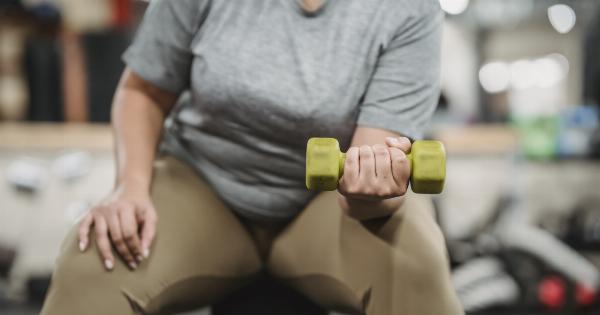Side epondylitis, also known as lateral epicondylitis or tennis elbow, is a condition that causes pain and inflammation in the tendons that connect the forearm muscles to the outer part of the elbow.
It is a repetitive strain injury often caused by activities that involve gripping and twisting motions of the forearm. While it is commonly associated with tennis players, anyone can develop this condition through various activities or occupations.
Understanding the Symptoms
The first step in avoiding side epondylitis is understanding its symptoms. The most common symptom is pain or tenderness on the outside of the elbow.
This pain may radiate down the forearm and may worsen with activities involving gripping or twisting motions. Some individuals may also experience weakness in the affected arm.
Proper Warm-up and Stretching
One of the key ways to prevent side epondylitis is by engaging in proper warm-up exercises before any repetitive activities. This helps to increase blood flow to the muscles and tendons, preparing them for the demands of the activity.
Additionally, performing regular stretching exercises for the forearm muscles can help improve flexibility and reduce the risk of injury.
Using Proper Technique
Whether you’re playing tennis, golf, or engaging in any other activity that involves repetitive forearm motions, using proper technique is crucial.
Learning the correct form and technique for your chosen activity can help minimize excessive strain on the tendons and reduce the risk of developing side epondylitis. Consider seeking advice from a qualified instructor or coach to ensure you are using proper technique.
Equipment and Tools
In some cases, using the right equipment and tools can make a significant difference in preventing side epondylitis. For example, using a tennis racket with a proper grip size and string tension can reduce strain on the forearm tendons.
Similarly, using ergonomic tools and equipment in occupational settings can reduce the risk of developing this condition.
Gradual Progression
Another way to avoid side epondylitis is by gradually progressing your activities or exercise routines. Avoid sudden spikes in intensity or duration, as they can increase the strain on the forearm tendons.
Gradually increasing the intensity, duration, or frequency of your activities allows your muscles and tendons to adapt and become stronger over time, reducing the risk of injury.
Rest and Recovery
Giving your body sufficient rest and recovery time is essential in preventing side epondylitis. Overloading your muscles and tendons without adequate rest can increase the risk of developing this condition.
Make sure to incorporate rest days into your exercise routine and listen to your body’s signals. If you experience pain or discomfort, take a break and allow your body to recover before resuming any activities.
Strengthening Exercises
Strengthening the muscles and tendons of the forearm can help prevent side epondylitis. Incorporate specific exercises that target the forearm muscles, such as wrist curls, wrist extensions, and forearm rotations.
Start with light weights or resistance bands and gradually increase the intensity as your muscles become stronger.
Ergonomics in the Workplace
Many individuals develop side epondylitis due to repetitive activities in their workplace. It’s important to maintain good ergonomics to reduce your risk.
Ensure that your workspace is set up correctly, with proper desk height, chair support, and ergonomic tools. Take regular breaks and stretch your forearm muscles throughout the day to prevent strain and fatigue.
Icing and Pain Relief
If you experience any pain or inflammation in the elbow area, applying ice or a cold pack can help reduce swelling and alleviate discomfort. Ice the affected area for 15-20 minutes at a time, several times a day.
Over-the-counter pain relievers, such as nonsteroidal anti-inflammatory drugs (NSAIDs), can also help manage pain and reduce inflammation. Remember to follow the recommended dosage and consult with a healthcare professional if needed.
Seek Professional Help
If you’re experiencing persistent or severe pain in the elbow area, it’s important to seek professional help.
A healthcare professional, such as a physical therapist or orthopedic specialist, can provide an accurate diagnosis and recommend appropriate treatment options. They can also guide you with specific exercises and techniques to prevent side epondylitis.
Conclusion
By following these preventive measures, you can significantly reduce the risk of developing side epondylitis.
Take proactive steps by engaging in proper warm-up and stretching routines, using proper technique, utilizing appropriate equipment, progressing gradually, prioritizing rest and recovery, incorporating strengthening exercises, maintaining good ergonomics at the workplace, and seeking professional help when needed. By taking care of your forearm muscles and tendons, you can enjoy your favorite activities and occupations without the discomfort of side epondylitis.






























